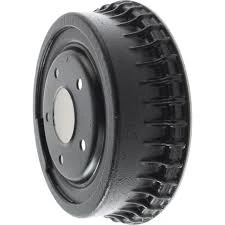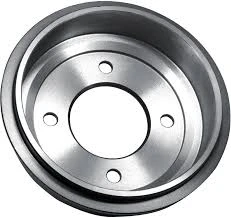Feb . 15, 2025 15:22
Back to list
drum brakes diagram
Drum brakes, a classic yet enduring component in the automotive world, often play second fiddle to their disc brake counterparts due to their seemingly archaic design. However, this underestimation belies the effectiveness and reliability they offer, particularly in heavy-duty vehicles. A deeper understanding of their mechanism, benefits, and applications not only enlightens enthusiasts and professionals alike but also highlights the engineering brilliance behind this technology.
Professionals maintaining drum brakes should possess a clear understanding of spring configuration and the adjustment process. Regular cleaning to remove brake dust and lubrication of moving components can substantially extend the lifespan of the braking system. Replacement drums should be checked for uniformity and integrity, ensuring that any signs of warpage or cracking are addressed to prevent compromising the brake's efficiency. In comparison to disc brakes, drum brakes may fall short in terms of heat dissipation and fade resistance during extended use. However, advancements in materials and designs have mitigated many of these downsides, making modern drum brakes robust and reliable. Developments in composite and higher friction materials for the linings are addressing performance concerns, providing enhanced durability and stopping power. Drum brakes epitomize a balance of simplicity and effectiveness, underscoring the ingenuity of their design. While they might be overshadowed by the flashier disc brakes, their role remains significant, particularly in sectors demanding durability and cost-efficiency. They have evolved over the years with technology, but their core mechanics remain fundamentally brilliant, a testament to their enduring legacy in automotive engineering. Advancements continue to reframe our understanding and expectations of drum brakes, and they remain a subject of study and innovation today. For manufacturers and automotive engineers, understanding the nuanced dynamics of drum brake systems proves invaluable, leading to more informed decisions and enhancements tailored to specific vehicular requirements. In conclusion, the understated brilliance of drum brakes, reflected through their design efficiency, cost-effectiveness, and self-energizing feature, persists in an automotive landscape dominated by rapid technological shifts. Continuing to evolve while maintaining core principles, drum brakes remain irreplaceable in numerous applications, proving that even the oldest technologies can adapt and thrive when engineered with precision and foresight.


Professionals maintaining drum brakes should possess a clear understanding of spring configuration and the adjustment process. Regular cleaning to remove brake dust and lubrication of moving components can substantially extend the lifespan of the braking system. Replacement drums should be checked for uniformity and integrity, ensuring that any signs of warpage or cracking are addressed to prevent compromising the brake's efficiency. In comparison to disc brakes, drum brakes may fall short in terms of heat dissipation and fade resistance during extended use. However, advancements in materials and designs have mitigated many of these downsides, making modern drum brakes robust and reliable. Developments in composite and higher friction materials for the linings are addressing performance concerns, providing enhanced durability and stopping power. Drum brakes epitomize a balance of simplicity and effectiveness, underscoring the ingenuity of their design. While they might be overshadowed by the flashier disc brakes, their role remains significant, particularly in sectors demanding durability and cost-efficiency. They have evolved over the years with technology, but their core mechanics remain fundamentally brilliant, a testament to their enduring legacy in automotive engineering. Advancements continue to reframe our understanding and expectations of drum brakes, and they remain a subject of study and innovation today. For manufacturers and automotive engineers, understanding the nuanced dynamics of drum brake systems proves invaluable, leading to more informed decisions and enhancements tailored to specific vehicular requirements. In conclusion, the understated brilliance of drum brakes, reflected through their design efficiency, cost-effectiveness, and self-energizing feature, persists in an automotive landscape dominated by rapid technological shifts. Continuing to evolve while maintaining core principles, drum brakes remain irreplaceable in numerous applications, proving that even the oldest technologies can adapt and thrive when engineered with precision and foresight.
Prev:
Latest news
-
Brake Drums for Trucks | OEM-Grade, Factory DirectNewsNov.10,2025
-
High-Performance Brake Drums for Trucks | OEM & ISONewsNov.10,2025
-
Brake Drums Built to Last — OEM-Grade, Balanced for TrucksNewsNov.10,2025
-
Brake Drums for Trucks – OEM-Grade, Durable, Low NoiseNewsNov.10,2025
-
Brake Drums for Trucks | OEM, ISO-Certified, Fast DeliveryNewsNov.10,2025
-
Brake Drums: OEM-Grade, Precision Balanced, Factory DirectNewsNov.03,2025
-
Brake Drums: Heavy-Duty, OEM-Grade, Precision-BalancedNewsNov.03,2025


